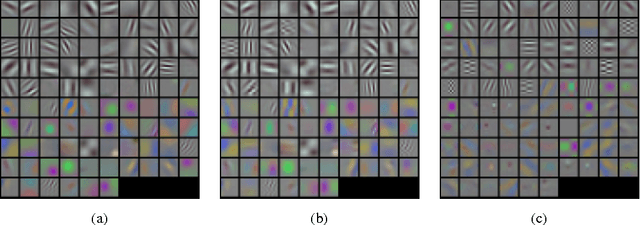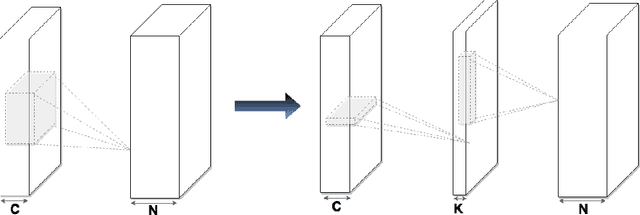Convolutional neural networks with low-rank regularization
Paper and Code
Feb 14, 2016



Large CNNs have delivered impressive performance in various computer vision applications. But the storage and computation requirements make it problematic for deploying these models on mobile devices. Recently, tensor decompositions have been used for speeding up CNNs. In this paper, we further develop the tensor decomposition technique. We propose a new algorithm for computing the low-rank tensor decomposition for removing the redundancy in the convolution kernels. The algorithm finds the exact global optimizer of the decomposition and is more effective than iterative methods. Based on the decomposition, we further propose a new method for training low-rank constrained CNNs from scratch. Interestingly, while achieving a significant speedup, sometimes the low-rank constrained CNNs delivers significantly better performance than their non-constrained counterparts. On the CIFAR-10 dataset, the proposed low-rank NIN model achieves $91.31\%$ accuracy (without data augmentation), which also improves upon state-of-the-art result. We evaluated the proposed method on CIFAR-10 and ILSVRC12 datasets for a variety of modern CNNs, including AlexNet, NIN, VGG and GoogleNet with success. For example, the forward time of VGG-16 is reduced by half while the performance is still comparable. Empirical success suggests that low-rank tensor decompositions can be a very useful tool for speeding up large CNNs.
 Add to Chrome
Add to Chrome Add to Firefox
Add to Firefox Add to Edge
Add to Edge